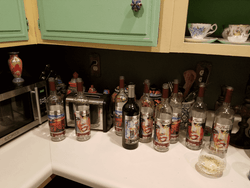Have you ever wondered what ingredients are contained in that bottle of wine you finished off last night? Most people know the wine is made from grapes and that it can take a long time to make. Most of the time wine spends after harvest is in a steel or oak barrel, where it is left to age for sometimes many years. What is it that makes wine so special? Let’s take a closer look at all the wine ingredients you may have never heard even heard of.
What Is Wine Made Out Of?
Wine is first and foremost made out of fermented fruit, and not just necessarily grapes. Almost any fruit that can be fermented can be made into wine, such as but not limited to pineapples, blueberries, strawberries, mangos, and more. For the most part, I will focus on wine made from wine grapes.
The original fruit contains natural sugars, carbohydrates, starches, and other natural contents that are passed on. These natural wine ingredients cause the wine to have caloric content. You might be surprised to know the wine’s leading ingredient is water, as the grapes themselves are on average 81% water. The second leading ingredient is ethanol alcohol which is created during the fermenting process.
Wine grapes are grown all around the world and there are over 10,000 varieties today. Weather conditions and location are huge contributing factors for achieving different levels of acidity and salinity. When wine grapes are grown closer to shore, the salty air causes higher levels of salinity. Thus, it garners a different taste than grapes grown inland. The same variety of wines can go under different names due to the region they were grown.
Wine Ingredients Added After the Harvest
Some grapes have high levels of acidity, such as barbera grapes, and are often mixed with varieties that soften their flavor without adding unnecessary sugars. One of the most innovative additions to wine after harvesting the fruit is the addition of tannins. While some wines are aged in steel vats, others are aged in small oak barrels. The oak barrels allow for elevated amounts of oxygenation and adds more tannins to the wine, which cuts some of the acidity from the grapes. The wine typically ranges from 2.5 to 4.5 on the pH scale, with 4.5 being considered the lowest.
Phenols, where tannins fall under as a phenolic substance, contribute to flowery aromas such as violets. Tannins from aging in oak can produce a clove-like aroma that can be seen clearly in Pinot Noir. Esters are a wine ingredient produced when acids react to alcohol. This causes them to change slowly and can create green apple-like flavors in some wines. Some ingredients in wine are present but do not change appearance or flavor much. These include amino acids, and a glass of wine can contain 4% of the recommended iron, magnesium, and potassium for their daily diets.





